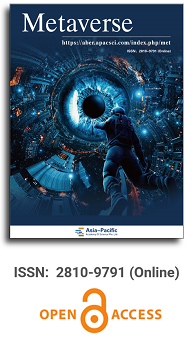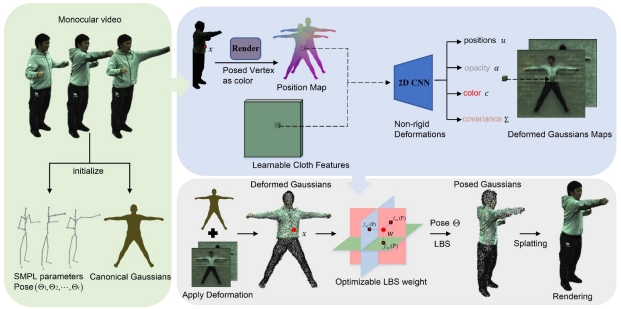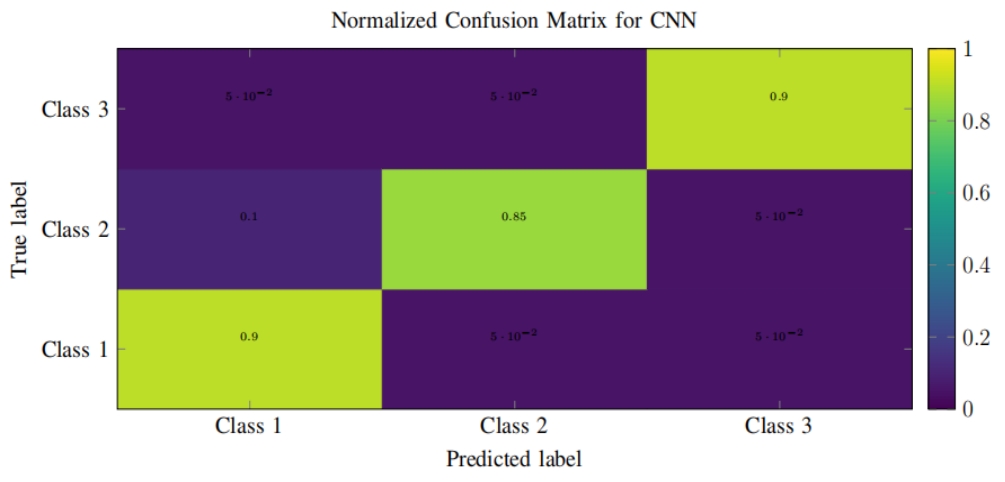
Asia Pacific Academy of Science Pte. Ltd. (APACSCI) specializes in international journal publishing. APACSCI adopts the open access publishing model and provides an important communication bridge for academic groups whose interest fields include engineering, technology, medicine, computer, mathematics, agriculture and forestry, and environment.



The contributions of using immersive environments for a competence-based teaching in basic education: An integrative review
Vol 2, Issue 2, 2021
Download PDF
Abstract
The adoption of the Common National Curricular Base and the New High School Law necessitates a cultural shift in basic education, with a focus on skill and competency development. Considering this, the purpose of this study was to research in the literature the contributions of immersive environments as an educational tool for competency-based teaching. Articles from the CAPES database and the key journals dealing with information technology in education in Brazil were collected using an integrated literature review. The articles examined provided several techniques for leveraging immersive settings in teaching, such as “virtual worlds”. It was discovered that innovative proposals have the potential to develop competencies and skills.
Keywords
References
- Prensky M. Digital natives, digital immigrants part 1. On the Horizon 2001; 9(5): 1–6.
- Tori R. Educação sem distância: As tecnologias interativas na redução de distâncias em ensino e aprendizagem (Portuguese) [Distance education: Interactive technologies for bridging distances in teaching and learning]. 2nd ed. São Paulo: Senac; 2017.
- Base Nacional Comum Curricular: educação é a base (Portuguese) [Common National Curricular Base: Education is the basis] [Internet]. Brasília: MEC; [updated 2018 May 30]. Available from: http://basenacionalcomum.mec.gov.br/.
- Souza MT, Silva MD, Carvalho R. Integrative review: What is it? How to do it? Einstein 2010; 11(8): 102–106.
- Freire P. Pedagogia do oprimido (Portuguese) [Pedagogy of the oppressed]. 23rd ed. Rio de Janeiro: Paz e Terra; 1987.
- Bainbridge WS. Online worlds: Convergence of the real and the virtual. London: Springer-Verlag; 2010.
- Azevedo CEF, Elia MF. Proposta de uma aplicação de mundos virtuais na educação usando o open simulator com diferentes requisitos tecnológicos (Portuguese) [Proposal of a virtual worlds application in education using open simulator with different technological requirements]. In: Anais do Simpósio Brasileiro de Informática na Educação. Aracaju: SBCOpenLib; 2011. p. 465–475.
- Greis LK, Reategui E, Marques TBI. A physical phenomena simulator for virtual worlds. Revista Latinoamericana de Tecnologia Educativa 2013; 12(1): 51–62.
- Zabala A, Arnau L. Methods for teaching competences. Porto Alegre: Penso Editora; 2020.
- Macedo AC, Góes ART. A integração da Realidade aumentada em sala de aula: a pesquisa aplicada em colégios públicos do litoral paranaense (Portuguese) [The integration of Augmented Reality in the classroom: Research applied in public schools on the coast of Parana]. Novas Tecnologias na Educação 2019; 17(1): 1–10. doi: 10.22456/1679-1916.95655.
- Hildebrand HR, Oliveira FM. Lucidity, teaching and learning in educational digital games. Informática na Educação: teoria & prática 2018; 21(1): 106–120.
- Silva LF, Cardoso A, Mendes EB, et al. Distributed environment in virtual reality as support the cooperative learning for the problems solving. Novas Tecnologias na Educação 2009; 7(3): 157–167.
- Franco NF, Stori N, Franco JF, et al. Um caso de Construção Colaborativa de Conhecimento e Desenvolvimento Educacional Interdisciplinar com Mediação das Tecnologias da Informação e da Comunicação (Portuguese) [A case of collaborative knowledge construction and interdisciplinary educational development with the mediation of information and communication technologies]. Novas Tecnologias na Educação 2005; 3(2): 1–10.
- Laurindo LEC, Moura IR, Santos MRP. A location-based mobile game to motivate and accompany students in the teaching-learning process. Revista Novas Tecnologias na Educação 2019; 17(3): 163–172. doi: 10.22456/1679-1916.99466.
- Hernandes R, Barreto RG. Da escola para o mundo: projeto integradores (Portuguese) [From school to the world: integrative projects]. São Paulo: Ática; 2018. p. 112.
- Zabala A, Arnau L. Como aprender e ensinar competências (Portuguese) [How to learn and teach skills]. Porto Alegre: Artmed Editora; 2010.
- Giraffa LMM. Uma odisseia no ciberespaço: O software educacional dos tutoriais aos mundos virtuais (Portuguese) [An odyssey in cyberspace: Educational software from tutorials to virtual worlds]. Revista Brasileira de Informática na Educação 2009; 17(1): 20–29.
- Moretti G, Malizia P. Learning and virtuality: Possible practices in the knowledge society. Docência e Ensino Superior 2015; 5(2): 129–152.
- Santos JTG, Burlamaqui AMF. Digital technologies developed for teaching by competences and skills inelementary education after BNCC: A systematic literature review. Revista Novas Tecnologias na Educação 2020; 18(1): 20–30.
- Kozma RB. Learning with media. Review of Educational Research 1991; 61(2): 179–212.
- Mattar J, Valente C. Second Life e Web 2.0 na educação: O potencial revolucionário das novas tecnologias (Portuguese) [Second Life and Web 2.0 in education: The revolutionary potential of new technologies]. São Paulo: Novatec; 2007.
- Moran J. Mudando a educação com metodologias ativas (Portuguese) [Changing education with active methodologies]. Foca Foto-PROEX/UEPG 2015; 12: 15–33.
- Vigotski LS. A formação social da mente: O desenvolvimento dos processos psicológicos superiors (Portuguese) [The social formation of the mind: The development of higher psychological processes]. 7th ed. São Paulo: Martins Fontes; 2007.
Supporting Agencies
Copyright (c) 2021 Maryana Schenfelder Schneider, Camila Maldonado Huanca

This work is licensed under a Creative Commons Attribution 4.0 International License.

This site is licensed under a Creative Commons Attribution 4.0 International License (CC BY 4.0).

Prof. Zhigeng Pan
Professor, Hangzhou International Innovation Institute (H3I), Beihang University, China

Prof. Jianrong Tan
Academician, Chinese Academy of Engineering, China
Conference Time
December 15-18, 2025
Conference Venue
Hong Kong Convention and Exhibition Center (HKCEC)
...
Metaverse Scientist Forum No.3 was successfully held on April 22, 2025, from 19:00 to 20:30 (Beijing Time)...
We received the Scopus notification on April 19th, confirming that the journal has been successfully indexed by Scopus...
We are pleased to announce that we have updated the requirements for manuscript figures in the submission guidelines. Manuscripts submitted after April 15, 2025 are required to strictly adhere to the change. These updates are aimed at ensuring the highest quality of visual content in our publications and enhancing the overall readability and impact of your research. For more details, please find it in sumissions...






.jpg)
.jpg)

